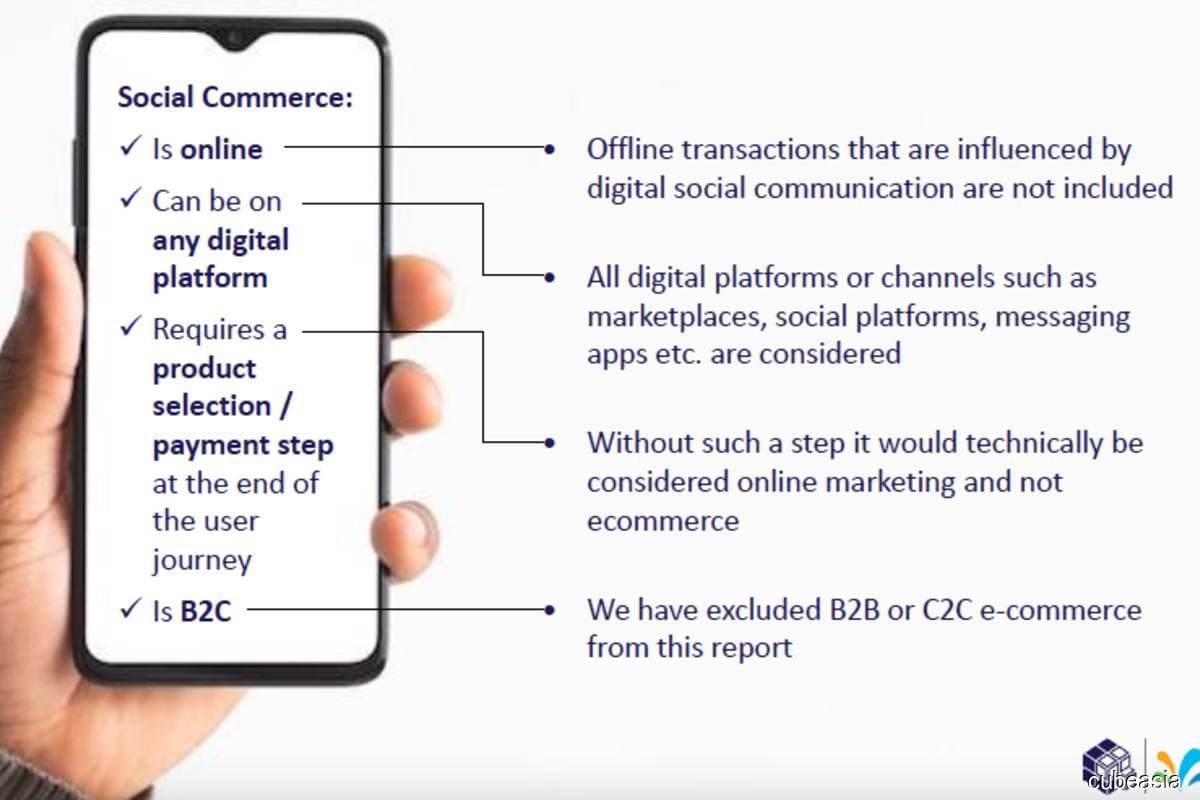
KUALA LUMPUR (Dec 12): Social commerce has grown in the intersection of social experiences and e-commerce. The four meaningful ways in which social experiences are being integrated into e-commerce are social platform commerce, conversational commerce, live shopping and community group buy, finds
Cube Asia’s “Social Commerce in Southeast Asia 2022” report.
The four archetypes contribute to US$42 billion gross merchandise value (GMV). The report describes social platform commerce as e-commerce, where critical parts of the purchase journey such as product selection, payment and order confirmation happen inside a social platform.
In 2022, social platform commerce contributed US$34 billion to the e-commerce GMV.
Social platforms offer brands an option to diversify their channel portfolio with more engaging user experience, lower commission fees, available tech infrastructure and competitive dynamics.
For instance, TikTok offers a full feature in-app e-commerce store. TikTok also keeps the check out and payment steps within the app. Social platforms are able to provide a direct link between sellers and buyers, reducing the number of intermediaries.
Furthermore, social platform commerce can be more profitable compared to marketplaces due to lower platform fees. Commissions charged by social platforms are either non-existent or lower than major marketplaces.
The next archetype, conversational commerce, is influenced heavily by real-time two-way conversations between sellers and buyers, states the report. This includes product evaluation and selection steps happening on the messaging platform.
“The social aspect of the experience is the ability to ask questions and get quick answers at any point along the purchase funnel, recreating digitally, the experience of buying a product in a physical store, where customers can interact with the store staff,” states the report.
Conversational commerce contributed US$12 billion to the e-commerce GMV. It offers higher sales conversion, has benefits across online and offline, has available tech infrastructure and better staff utilisation, with lower marketing costs.
The objective of conversational commerce is to help answer users’ questions in real-time. As a result, the drop-off rate at each step is reduced and overall conversation is improved. For example, the Line app has a fully-functional e-commerce store built right into the chat interface, offering a seamless and personalised purchase experience.
Live shopping is another archetype in which social experiences are being integrated into e-commerce. In Southeast Asia, Facebook has been the leading host platform for live shopping streams.
Live shopping offers brands a high engagement sales channel with relevant for experience products, growing live video consumption and an extensive influencer and tech ecosystem. As such, live shopping is a US$13 billion market in Southeast Asia.
The report notes that Indonesia has nearly US$5 billion estimated GMV from live sales in 2022. Live streaming has a huge impact in the country, with 40% of internet users expected to have made a purchase. In Southeast Asia, 44% of internet users have participated in live shopping in the last 12 months.
The report divides live sellers into three categories. These are independent sellers, brands and retailers and influencers.
“Low entry barriers mean that there are thousands of live-streams active at any moment. Consumers can only view one livestream at a time, however, so there’s sharp competition for viewership,” added the report.
Community group buy makes up the final archetype of social commerce. Community group buy is divided into price-led models and reseller-led models.
When a group of people come together in pursuit of unlocking a deal, it is called a price-led model. Meanwhile, when a reseller is the glue that binds the community, it is called a reseller-led model.
Community group buy offers a “no cure no pay” business model, whereby marketing responsibilities are shifted from brand to reseller. Furthermore, it also offers low cost access to tier two and three cities, and is useful for slow-moving inventory.
Community group buy only comprises around 3% of e-commerce GMV in Southeast Asia.
WeBuy is an example of a community group buy platform in Southeast Asia. This is how it functions. Group leaders broadcast a new deal when it is launched on the WeBuy website, to their local communities through Whatsapp. Interested buyers can then buy the product from the website and have it delivered to the group leader’s address, for them to pick it up later.
In Southeast Asia, reseller-led models have had more traction. That being said, these models only work if it delivers value for money from the end-users’ perspective.
“While reseller-led models emerged to bring e-commerce to users who could not buy online themselves, buyers in most Southeast Asian countries now, are already sophisticated. As a result, for the model to become a meaningful share of a customer’s wallet, it will need to structurally deliver a better price,” states the report.




